The aim of this paper is to summarize the new features of the draft Fortran 08 standard (ISO/IEC 10) We take as our starting point Fortran 03 (ISO/IEC 04) An official extension for enhanced module facilities has been published as a Type 2 Technical Report (ISO/IEC 05) and WG5 was committed to include this in Fortran 08IBM C/C and Fortran new beta compilers available for download By SI YUAN ZHANG 7 months ago IBM has been contributing code to the LLVM project for both IBM Power® and IBM Z® in the areas of code generation and exploitation, portability & usability enhancements, and toolchain support As we shared in our last announcement ' IBM C/C and Using a structure constructor for a type with a procedure pointer gives a spurious warning, but more importantly, calling the function bound to that pointer produces an ICE
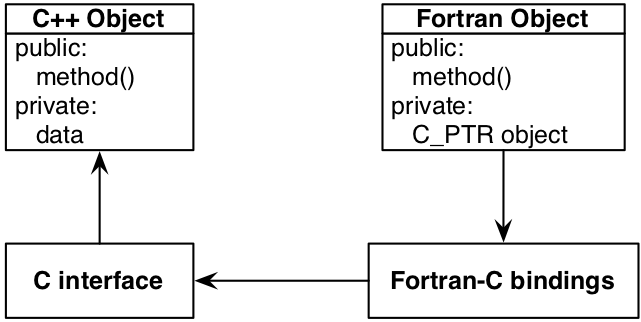
Design Object Oriented Design Atlas
Fortran defined type constructor
Fortran defined type constructor- Hello, I'm using gcc 63 on w764, with these gfortran compile flags FLAGS = std=f08 O2 Wall Wextra fnorangecheck Is this legal code? 228 Views You have to use "constructors" for the initialization value For example fortran type (mytype) typeScalar = mytype (name='Name1', value=1, exist=true) /fortran For components that don't have default values in the type declaration, you must specify them in the constructor However, doing this for an array of 100 is rather



Wiki Uiowa Edu Download Attachments Fortran Novella Holcomb Pdf
I am working on an interface to the nanoflann library for Nnearest neighbor searches in two and threedimensions This is a headeronly library written in C I have faced a few issues in the process, and would appreciate help from the community to establish what are the "healthy" practices Interfacing between Fortran logical and C bool type I want to interface toFortran 90 Derived Data Types The Fortran 90 derived data type is similar to C structures and also has some similarities with C classes The syntax for declaring a derived type, is type mytype integer i real*8 a(3) end type mytype To create a variable of type mytype, use type (mytype) var An array of mytype can also be createdAnother terminology used in OOP is that of constructors and destructors for objects An intrinsic constructor is a system function that is automatically invoked when an object is declared with all of its possible components in the defined order In C, and F90 the intrinsic constructor has the same name as the "type" of the object One is
This might be the most viable option, using an enum type on both C and Fortran side allows to "expose" the select type mechanism in a C switch/case statement coming close to the original intent The namespacing in the API for the specific types might become a bit lengthy, but I don't mind the extra verbosity here, since this would be aFortran 90 has no concept of unsigned integers, nor 1 byte or 2 byte integers It has a single, signed integer type, typically of 4 or 8 bytes (Fortran 03 adds new types for C interoperability) Arrays Arrays can have up to 7 dimensions, specified within ( ) parenthesisIf an allocatableis a member of a type, a constructor must be written A destructor is a subprogram that releases memory for a type This may be required if you allocate in a constructor The garbage collection in subprograms will not release memory allocated for a type Fortran has no special syntax for a constructor or destructor
1 level 1 floatinggoateyeball Scientist Original Poster 1 year ago OK figured out (finally) xD my custom constructor was expecting a array but i was passing a matrix, then the Fortran called the correct constructor (the default one) because there was a matrix member in the exact right shape What a rookie mistake!In Fortran 95 you are only allowed to use a single signed integer, or real literal constant in each part of the complex constructor In Fortran 03, you can also use a named constant In Fortran 08, you can use complex part designators to access theA structure constructor is an unnamed structure Syntax typename ( exprlist) Where typename is the name of the derived type exprlist is a list of expressions Each expression in exprlist must agree in number and order with the corresponding components of the derived type Where necessary, intrinsic type conversions are performed




Writing Type Stable Julia Code Sintefblog




8 Working With Abstract Data Using Derived Types Modern Fortran Building Efficient Parallel Applications
The Intel® Fortran Compiler (Beta) is our new compiler based on the Intel® Fortran Compiler Classic (ifort) frontend and runtime libraries This new compiler uses the Intel Fortran Front End along with the LLVM framework The driver for this new compiler is named 'ifx' At this time ifx supports features of the Fortran 95 language andInteger, parameter A = 2, 4 1, A, 3 !Every Fortran function which returns the derived type variable, can be called "constructor", because the memory have to be allocated for the return variable It is assumed that constructor and destructor is in the same module where the derived type is defined



Http Www Fortran s Org 19 Fortranbenefitssurvey Final Pdf



2
The distributed array type constructor supports HPFlike data distributions However, unlike in HPF, the storage order may be specified for C arrays as well as for Fortran arrays Advice to users One can create an HPFlike file view using this type constructor as follows type, public string_type sequence String type holding an arbitrary sequence of characters Constructor for new string instances private elemental function new_string(string) result(new) Constructor for new string instances from a scalar character value Arguments Type Intent Fortranlang/stdlib was developed by fortranlang/stdlibThis type constructor facilitates creating filetypes to access arrays distributed in blocks among processes to a single file that contains the global array This type constructor can handle arrays with an arbitrary number of dimensions and works for both C and Fortran ordered matrices (ie, rowmajor or columnmajor)




Distributed Array Datatype Constructor
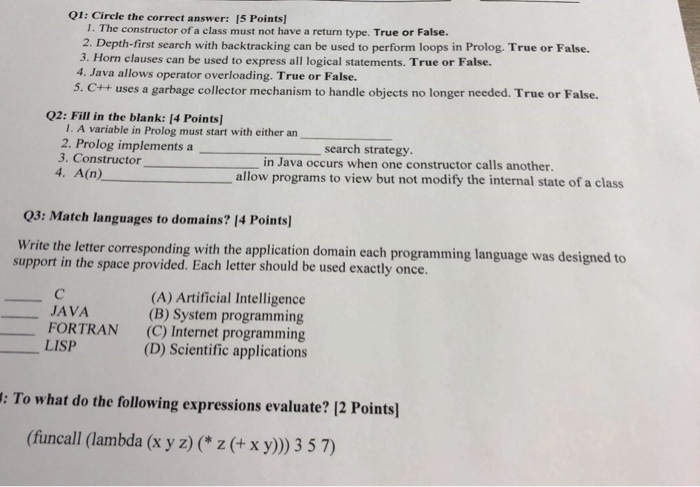



Solved Q1 Circle Correct Answer I5 Points Constructor Class Must Return Type True False 2 Depth Q
Given Fortran's lack of "new" keyword similar to that in OOcentric languages and intricacies with type construction, my own preference is to use to simple methods that operate on classes (typebound procedures in Fortran parlance, as you know very well) rather than constructors and in general, I try to avoid Fortran pointers (aliases) if I canType_name is the name of the derived type expr is an expression Expressions are defined under Chapter 5, Expressions and Assignment A structure constructor allows a scalar value of derived type to be constructed from an ordered list of valuesNote that the constructor function is not part of the class definition, and as such the object is not passed to the constructor function In addition, the Timer object being created is defined as a Type(TTimer) not Class(TTimer), also because this function is not part of the class definition That is all there is to it Simple and elegant



2
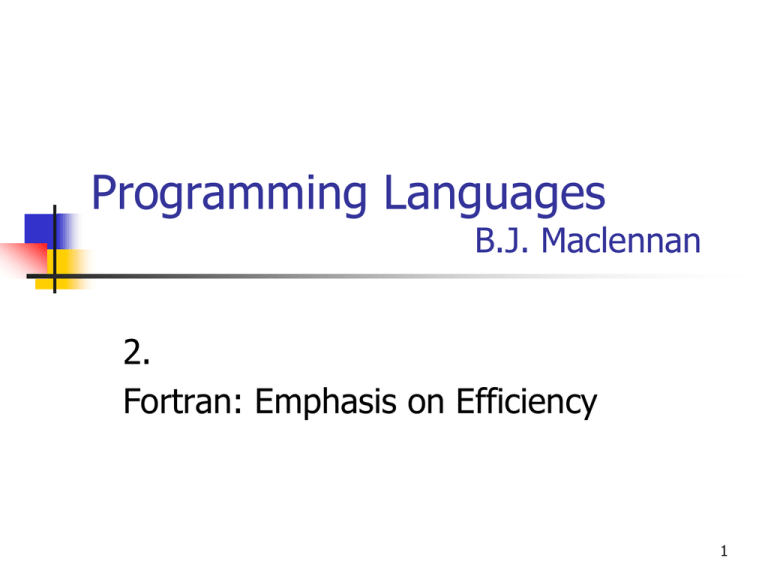



Maclennan Chap2 Fortran Ppt
Yes, say your 'class' e_t (extended derived type in Fortran) inherits a base class named b_t, you can do %b_t = b_t () where is the object of type e_t because the base type in 'contained' in the extended type Look into the limitations when the base is an abstract type though 0813 PMA rank1 length4 array of default integer type, with A's elements is equivalent to 1, 2, 4, 3 !Position in the constructor which is known as a structure constructor Each component is assigned the value in the corresponding str2 = string(7, 'Fortran') The form of a literal constant of a derived type is shown by str1%length 7 To select components of a derived type object, we use the % qualifier TYPE(string) strl, str2




Object Oriented Programming In Fortran 03 Part 1 Code Reusability Subroutine Object Oriented Programming




Distributed Array Datatype Constructor
You can also make constructors in Fortran which accept variable number of arguments It is even possible with the default structure constructors which every derived type has by default If you defaultinitialize a component, it is optional in the constructor The same holds for allocatable and pointer components private elemental function new_string_from_integer_int16 (val) result (new) Constructor for new string instances from an integer of kind int16 Arguments Type Intent Optional Attributes Name integer (kind=int16),A Fortran derived type is interoperable with C if it has the BIND attribute The Fortran compiler implements the features described in chapter 15 of the Fortran standard 4612 Fortran 03 Enhanced Array Constructor Use of square brackets in place of (/ and /) in array constructors is allowed X = 32, 401, 65



1




8 Working With Abstract Data Using Derived Types Modern Fortran Building Efficient Parallel Applications
41 Fortran 03 status GNU Fortran supports several Fortran 03 features;The form was introduced in Fortran 03 and is generally regarded as clearer to read, especially in complex expressions This form is used exclusively in this example The values featuring in an array constructor may be scalar values, array values, or implieddo loops Fortran is a strongly typed language, meaning that entities (variables, etc) have a type that is largely known at compiletime and can be checked by the compilerIn addition to the intrinsic types that existed in FORTRAN 77 (integer, real, complex, logical, character), Fortran 90 added the concept of userdefined types or "derived types"




Creating The Fortran Com Server




Fortran Basics Pdf Document
There one finds "C494 (R466) If typespec is omitted, each acvalue expression in the arrayconstructor shall have the same type and kind type parameters" This does not apply yet as we have everywhere defaultkind character variables But it continues a few lines later as follows (note the "same length type parameter") "If typespec is4612 Fortran 03 Enhanced Array Constructor Use of square brackets in place of (/ and /) in array constructors is allowed X = 32, 401, 65 The Fortran 03 standard allows the use of square brackets as array constructors This can conflict with interval constants This is the second part to a series of articles that explore ObjectOriented Programming (OOP) in Fortran 03 (F03) The first installment introduced the OOP paradigm and three important features to OOP inheritance, polymorphism, and information hiding F03 supports inheritance through type extension, polymorphism through its CLASS




The New Features Of Fortran 03 David Muxworthy Bsi Fortran Convenor Ppt Download




Exposing Fortran Derived Types To C And Other Languages
A Fortran constructor may be a static or an instance constructor It is defined using an INITIAL statement which declares a constructor name, and appears below the CONTAINS statement in a type definition statement Static and Instance ConstructorsA derived type, or structure, is a collection of named components (variables, arrays, other types), similar to a "record" in Pascal or a "structure" in C A structure can be referred to as a whole, and its components can also be referenced, using the % sign (rather than the dot of other languages)An incomplete list can be found below See also the wiki page about Fortran 03 Procedure pointers including procedurepointer components with PASS attribute Procedures which are bound to a derived type (typebound procedures) including PASS, PROCEDURE and GENERIC, and operators bound to a type




Data Structuring In Fortran Springerlink



Www Csc Fi Documents 0270 Fortran9503 Handout Pdf Cf17db59 3267 48e7 9ccd 6e29df90cbb5
With the array written out in array element order Generally the values in the constructor may be arbitrary expressions, including nested array constructorsAs discussed previously in Variables, there are five builtin data types in FortranA derived type is a special form of data type that can encapsulate other builtin types as well as other derived types It could be considered equivalent to struct in the C and C programming languages A quick take on derived types Here's an example of a basic derived type Factory Pattern A Factory Pattern is a creational design pattern which provides a uniform interface for creating objects related to each other Here is a simple example Let us say that you want to connect to a database There are so




Fortran 90 Reference Card Cheat Sheet
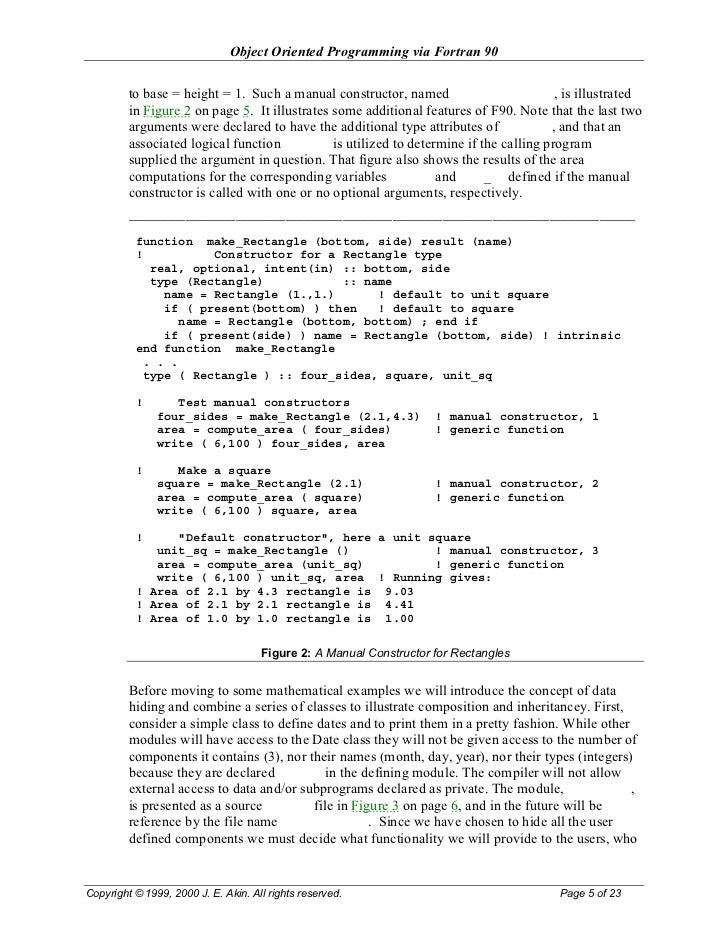



Ec Oop F90
Custom constructors can be made for derived types by using an interface to overload the type name This way, keyword arguments that don't correspond to components can be used when constructing an object of that typeName equivalence two types are equal if their names are equal In this kind of equivalance, one "type(MYSTRUCT)" would be equal to another "type(MYSTRUCT)") Index (key) equivalence each new type definition is assigned a unique index (or key) In this kind of equivalance, the first "type(MYSTRUCT)" is assigned a unique index and the second "type(MYSTRUCT)" assigned aThis type constructor facilitates creating file types to access arrays distributed in blocks among processes to a single file that contains the global array This type constructor can handle arrays with an arbitrary number of dimensions and works for both C and Fortranordered matrices (that is, rowmajor or columnmajor)
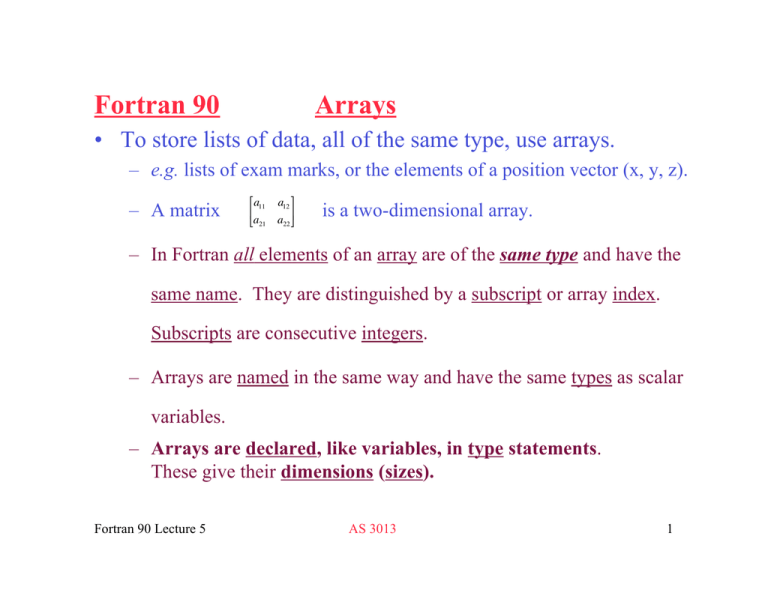



Fortran 90 Arrays




Fortran Basics Pointer Computer Programming Parameter Computer Programming
Fortran allows you to define derived data types A derived data type is also called a structure, and it can consist of data objects of different types Derived data types are used to represent a record Eg you want to keep track of your books in a library, you might want to track the following attributes about each book −Fortran has five intrinsic data types INTEGER, REAL, COMPLEX, LOGICAL and CHARACTER Each of those types can be additionally characterized by a kind Kind, basically, defines internal representation of the type for the three numeric types, it defines the precision and range, and for the other two, the specifics of storage representation



Www Osti Gov Servlets Purl




Fortran Arrays Tutorialspoint



Lahey Lg Fortran



Www3 Nd Edu Apaul2 The Jungle Fortran Files Ifort Pdf
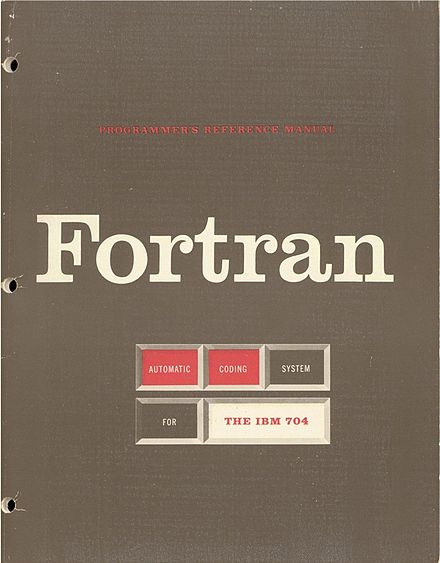



Fortran Wikiwand



Www N Oca Eu Pichon Fortran00 Pdf
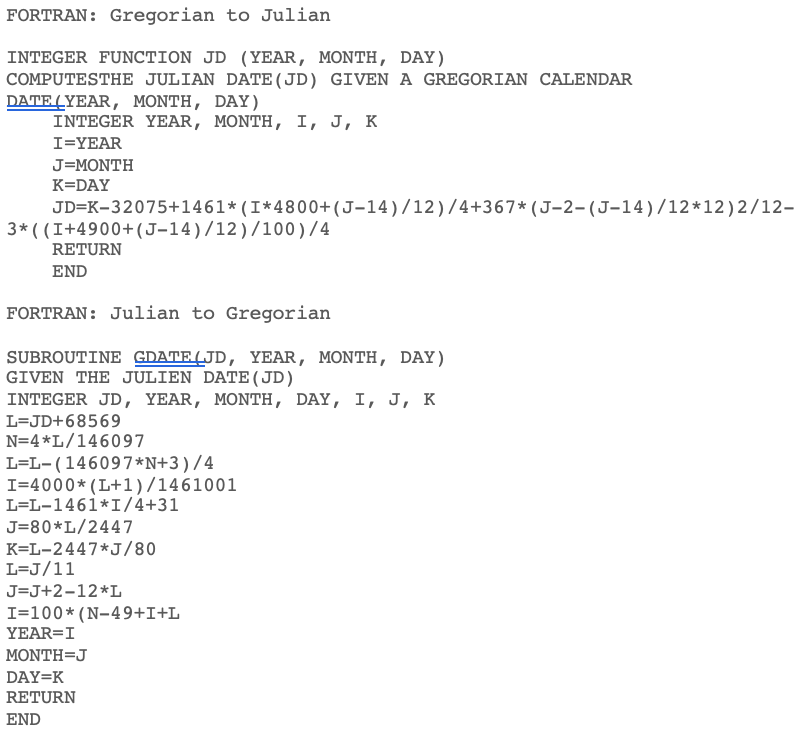



Create A C Called Mydate It Should Have The Chegg Com
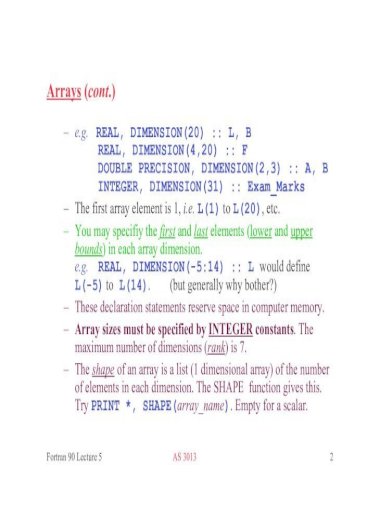



Fortran 90 Arrays



Http Www Orengonline Com Arquivos Tutorial F90 Pdf




Fortran Quick Guide




Extracting Uml Class Diagrams From Object Oriented Fortran Foruml



Http Www Users York Ac Uk Mijp1 Teaching 2nd Year Comp Lab Guides Advancedfortran Pdf
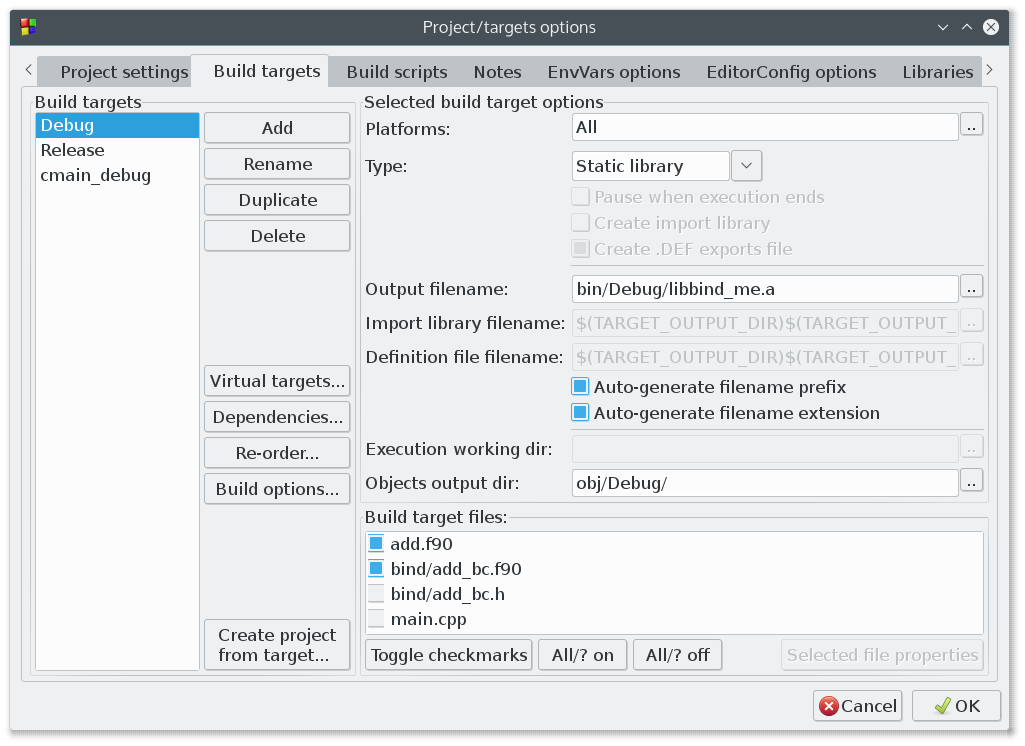



Bindto User Guide Cbfortran



Wiki Uiowa Edu Download Attachments Fortran Novella Holcomb Pdf




On To Objects Embedded Com




7 Working With Abstract Data Using Derived Types Modern Fortran Building Efficient Parallel Applications
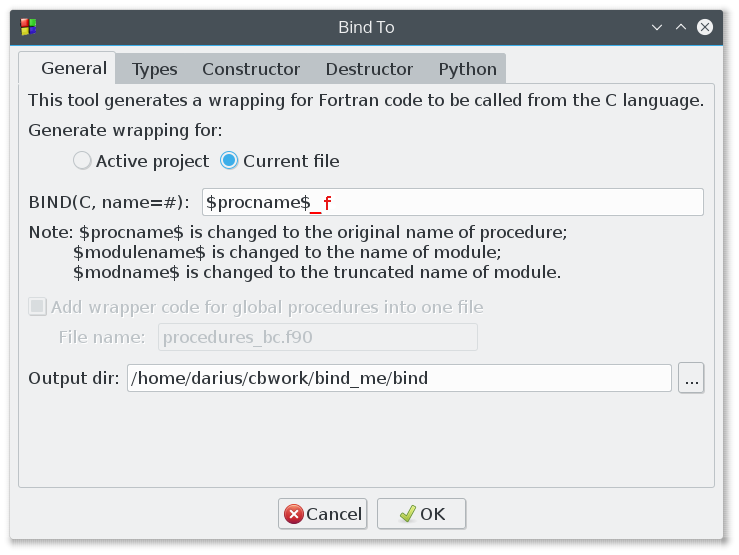



Bindto User Guide Cbfortran



Http Www Ehu Es Sgi Archivos Lang For Pdf




Getting Started With Object Oriented Fortran Youtube



Programming Languages
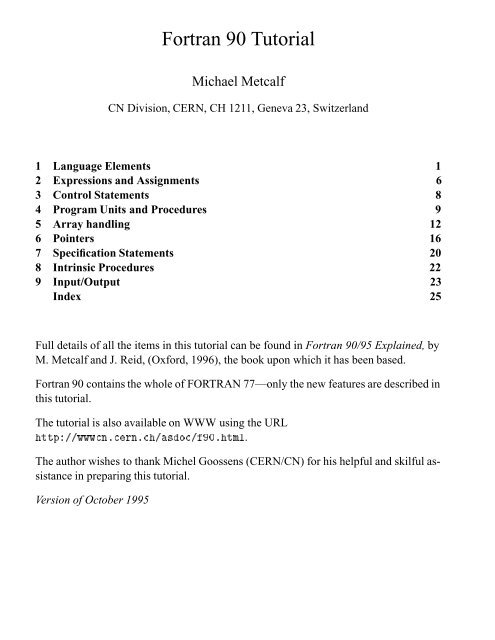



Fortran 90 Tutorial Grdelin
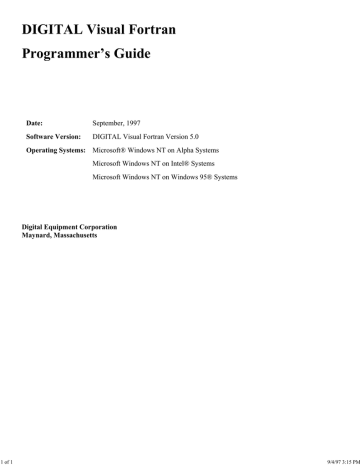



Digital Visual Fortran Programmer S Guide Manualzz




Ec Oop F90



Www2 Southeastern Edu Academics Faculty Kyang 07 Fall Cmps401 Doc Ba368 Pdf




How To Make A Default Constructor C Code Example




Chapter 4 Data Types



Fortran Wikipedia



Cds Cern Ch Record Files Cn 95 001 Pdf




Fortran Basics Pdf Document




Object Oriented Fortran Semantic Scholar



Www Archer Ac Uk Training Course Material 14 08 F95 Ccfe Fortran95coursenotes Pdf



1



Github Sbai7 Farlib Fortran Array Collection Library




Fortran 90 Features Ohio State University Fortran 90 Features 4 Fortran 90 Objectives Language Pdf Document




Interfacing With Fortran




Programming Languages B J Maclennan 2 Fortran Emphasis




8 Working With Abstract Data Using Derived Types Modern Fortran Building Efficient Parallel Applications




Unit 2 Ppl Data Aggregation And Type Constructor Youtube



Www Tacc Utexas Edu Documents Fortran Class Pdf



2
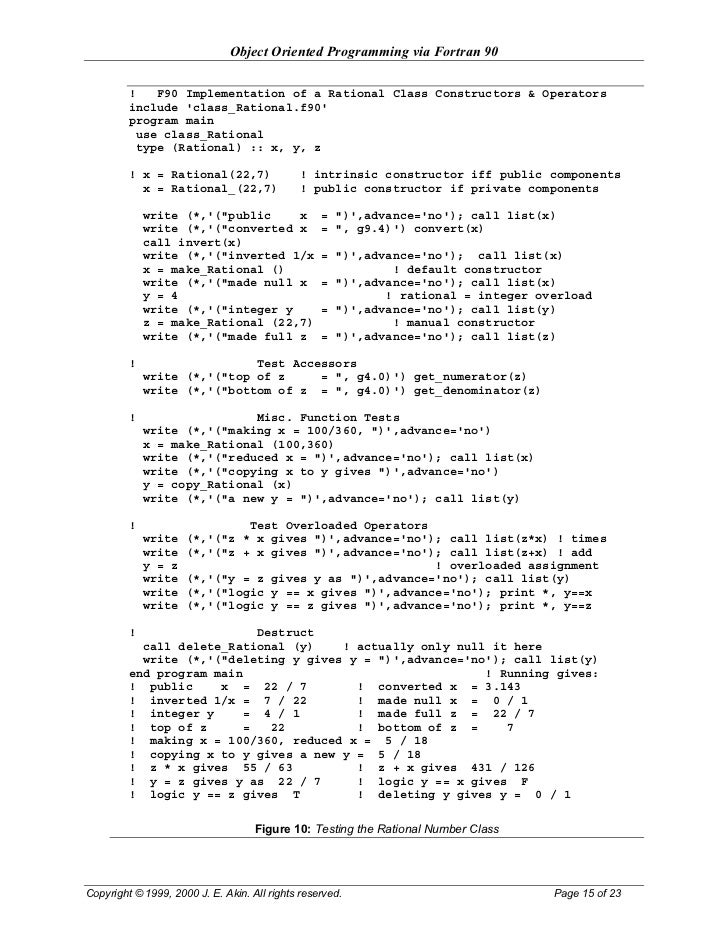



Ec Oop F90




This Isn T Your Parents Fortran Managing C Objects With Modern Fortran




Design Object Oriented Design Atlas




Fortran For Mac Peatix




No Title



Cds Cern Ch Record Files Cn 95 001 Pdf



2




Statements




Fortran Wikipedia



Object Oriented Programming Via Fortran 90 Emerald Insight



Q Tbn And9gcsbhb4gmauz61iqpgfsktmbrntimipma Fngmyqzunyx3ebvr 1 Usqp Cau



Docs Nvidia Com Hpc Sdk Pgi Compilers 17 9 Pdf Pgi17fortref Pdf



Q Tbn And9gcrukdnncvbwn794cjv9uk08h F4d3ceqmsdfofasrec21yigawd Usqp Cau




Pdf Object Oriented Programming With Fortran 0x




Figure 2 From This Isn T Your Parents Fortran Managing C Objects With Modern Fortran Semantic Scholar



Gcc Gnu Org Onlinedocs Gcc 6 1 0 Gfortran Pdf




Introduction To Programming With Fortran Springerprofessional De



Object Oriented Programming Via Fortran 90 Emerald Insight
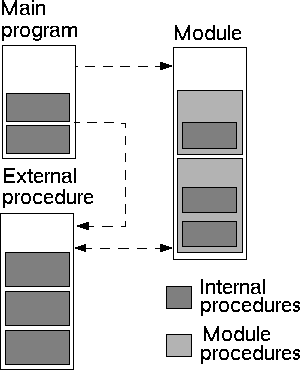



Introduction To Fortran 90 Program Units Qub



Protected Components Issue 156 J3 Fortran Fortran Proposals Github



Citeseerx Ist Psu Edu Viewdoc Download Doi 10 1 1 1063 46 Rep Rep1 Type Pdf




C For Fortran 95 Users June 07 Page 1 A C Tutorial For Fortran 95 Users By Dr Ahmet Bingul June 07 University Of Gaziantep Department Of Engineering Ppt Download



2




Fortran Quick Guide



2




Emulating Multiple Inheritance In Fortran 03 08




Object Oriented Design Patterns In Fortran 90 95 Mazev1 Mazev2 And Mazev3 Sciencedirect




How To Create A Constructor In Java Code Example




Chapter 4 Data Types




Pdf Exposing Fortran Derived Types To C And Other Languages Scott Kruger Academia Edu




The Fortran 90 Programming Language Book Chapter Iopscience




Domainspecific Languages Kathleen Fisher Programming Languages Fortran Cobol




Fortran The Delocalized Physicist
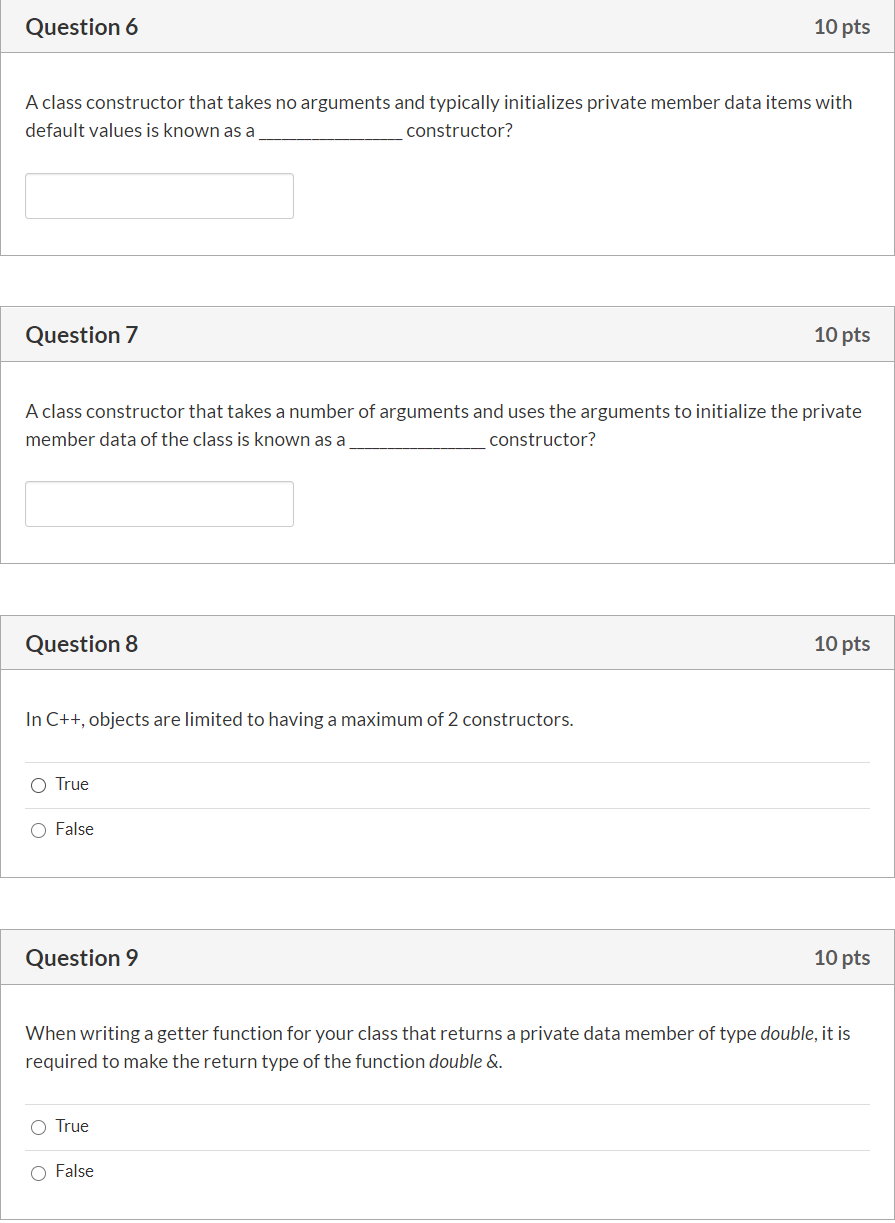



Solved Question 1 10 Pts Early Versions Of The Fortran La Chegg Com



Info Ornl Gov Sites Publications Files Pub Pdf




Constructors An Overview Sciencedirect Topics



2



Http Dl Acm Org Ft Gateway Cfm Id Type Pdf



Www Math Fsu Edu Acmath Fortran90coursenotes Pdf



Www Ibm Com Support Knowledgecenter Ssgh4d 16 1 0 Com Ibm Compilers Aix Doc Langref Pdf View Kc




Fortran Wiki Thereaderwiki
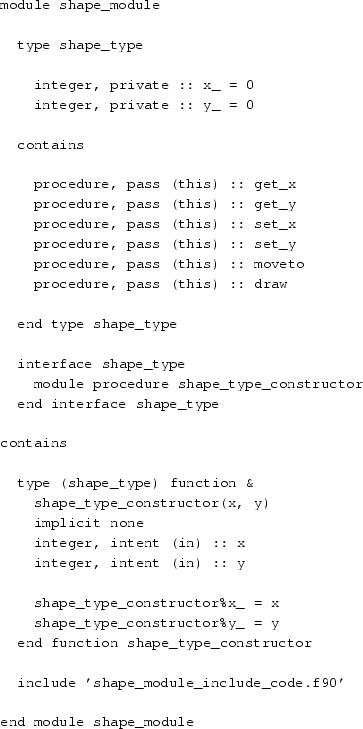



Introduction To Object Oriented Programming Springerlink


